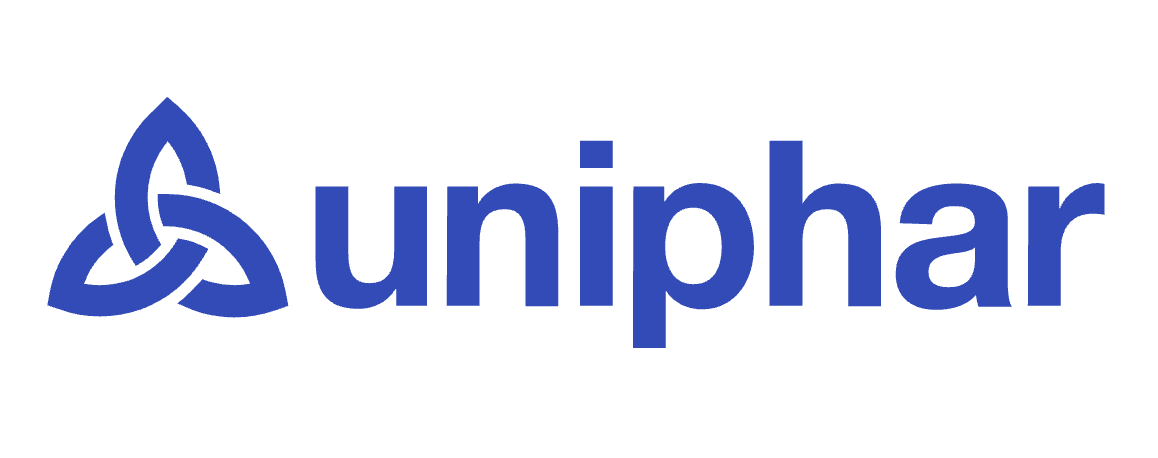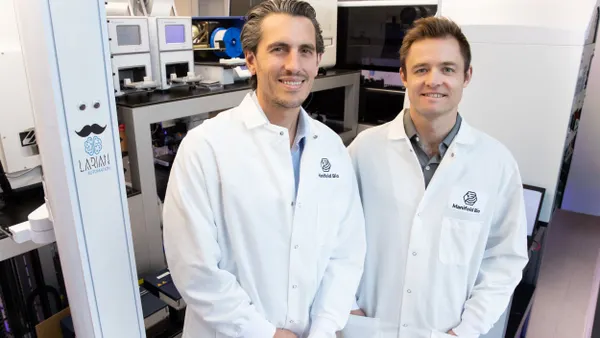Working Where It Makes Sense to Work By Denise Myshko Companies are no longer constrained by the parameters of space and time. Virtual teams are becoming more of a reality. Making this possible are a combination of new processes and technology advances. From the chemistry side of the business to manufacturing to product development to commercial sales and marketing, it is increasingly unlikely that team members will be based in the same building. Globalization, downsized organizations, a more mobile workforce, and a new emphasis on project-oriented structures are leading to a geographic dispersion of employees. This “work anywhere, anytime, and with anyone” concept can provide advantages in terms of reduced costs — and some say productivity gains. Today’s technologies — e-mail, instant messaging, video/Web conferencing, and expanded broadband coverage — allow for more sophisticated and immediate communications between people and among teams. But working virtually presents challenges as well. For teams working physically apart for most of the project life cycle, new management processes have to be developed to make the teams efficient and effective. This requires flexible roles and new skills for both team members and managers. Mobility in the Making “Mobility has become the trend,” says George Bailey, global leader of the electronics industry at IBM Business Consulting Services. “People don’t use the term telecommuter anymore. That is so pre-Internet. Now people talk about mobility, and it’s an interesting concept because it means that people are working from everywhere — airports, offices, factories, and their homes — wherever it makes sense. There will come a time when people in the office will be viewed as having nothing to do.” “In the networked world, virtual work enables 24-hour task performance,” says Benjamin Dattner, Ph.D., principal of Dattner Consulting LLC. Dr. Dattner also is an adjunct professor at New York University. “People from different time zones and different countries can work collaboratively on a project. In my experience, there often is a hybrid between traditional teams and virtual teams.” Virtual teams are the way of the future in the pharmaceutical industry, says Carol Cherkis, Ph.D., VP of business development and the managing director, USA, of Gene Networks International. “To develop the next generation of new products, companies need to use the best technologies and work with the best scientists, regardless of their geographic location,” Dr. Cherkis says. “And the venture capital community is becoming much more interested in this type of corporate structure.” Accordingly, Mr. Bailey says there are big structural changes taking place across industries. “Executives have figured out that they no longer can, or should, have all the functions needed to run the company within the four walls of the organization,” Mr. Bailey says. “We use a component-based business model to help clients look across their entire business and break it down into different components. Then each component is analyzed to assess whether something should be done in house or whether it is something that a business partner can do.” With work that is outsourced or done by partners, he says managers now have to be able to coordinate an entire network of companies and people to accomplish the designated tasks. “Virtual team managers — the leaders of tomorrow — will need a very different skill set from the leaders of yesterday,” Mr. Bailey says. “They will have to be skilled at managing in an ecosystem of partners and outsource suppliers.” “In the past, companies would outsource work in sequences and phases,” says Murray White, U.S. managing director at ThoughtWorks Inc. “They would do some analysis and then throw the work over the wall to another team in a different location. Then that team would continue the work, stop, and throw it back over the wall to a third team. This process doesn’t work well. Projects are never black and white. Things change, and most teamwork involves a high degree of collaboration and communication. When companies try to run a team based on document exchange, it is harder on the team. And, regardless of how many locations a company might have, people have to be assigned as team ambassadors.” The Pros and Cons Virtual teams can help save money, especially with regard to the costs associated with travel. “This is one of the main reasons for working remotely,” says Ellen Maynard, VP, client services, at ClinForce Inc. “After September 11, the expense of sending a monitor, for example, across the country didn’t make much sense. The trend now is to have sites monitored by regional people.” Dr. Dattner says virtual teams can be more effective in terms of brainstorming and developing creative solutions. “Hierarchies are minimized when people work virtually,” he says. “People are more comfortable speaking up. And, in a virtual team there aren’t the same types of status cues, such as who has a bigger office or who is sitting where at the table. In a teleconference or an online chat, people are more likely to pay attention to the quality of the ideas rather than to the rank of the person who is proposing them.” Experts do caution that virtual teams may lose some of the benefits that come from personal interaction on a daily basis. “We started out with just a senior-management team and a few people in a lab, and as we continue to grow, communication is becoming a major challenge,” Dr. Cherkis says. “In the last six months, we have made an incredible effort to talk more. Teleconferences and e-mails are constant for us, and we have just begun distribution of a monthly e-mail newsletter. Last year, we tried video conferencing, but our current system is temperamental so we aren’t using it now.” Because of time differences, talking by phone can be challenging as well, she says. “We have teleconferences at the most incredible hours,” she says. “At least one of us just is waking up and one is getting ready for bed.” According to Richard Jenkins, general manager for life sciences at IntraLinks, collaboration comes down to humans and personalities and there are people who find it difficult to work remotely or to communicate over the phone, and some people just don’t want to use technology. Ms. Maynard says the people who succeed working remotely are self motivated and independent thinkers. “There is still a group of people who need to have the structure of an office,” she says. “Those people generally don’t do well working in remote settings and with virtual teams. Being productive while working remotely is a learned process and may not be the ideal structure for everyone.” Building a Virtual Team To integrate partners into virtual project teams, the collaboration has to be carefully structured, says Kirk Gallion, chief technology officer at Octagon Research Solutions Inc. “One of the most challenging aspects is to harmonize the processes — determining who is accountable for what,” he says. “Often this can make or break a partnership. Collaboration tools can help support accountability, as well as support an organization’s processes. This goes beyond a workflow engine that enforces a sequence of steps. A process-management system should facilitate communications and automate as many processes as possible.” Virtual teams have to establish a team identity with core ways of working with shared values and perspectives, says Nina Christopher, a senior consultant at RHR International Co. “The team needs to address how to best ensure alignment, exchange information, make decisions, and how to deal with conflict,” she says. “These parameters need to be established up front and in person. After the culture of the working group has been established, periodic face-to-face meetings are important and can enhance the success of the team.” Companies, Mr. Bailey says, will have to change how they assess the performance or success of employees in virtual teams. “Companies are finding that they have to manage by metrics not by inspection,” Mr. Bailey says. “In the old days — from the industrial revolution through the 1990s — the idea was that companies needed supervisors who could stand behind employees and make sure they were working. Today, companies have key performance metrics that people must meet. We call this an on-demand dashboard. In other words, managers need a system that allows them to monitor the key performance indicators. My boss sees me physically once every six weeks. But that’s fine because he can see the numbers and knows I’m working.” The Technology Transfer Technology advances have made mobile and collaborative workforces possible. Middleware allows integration of applications, and new software now allows people to share data and information. Then this is made available to employees through a portal that can be accessed on their desktop computers. At the same time, there has been an explosion of collaboration tools that make it easier for people to communicate, such as instant messaging, PDAs, cell phones with text messaging, as well as laptops and BlackBerrys. Additionally, computers have become faster, and broadband access to the Internet is now common. “About 10 years ago, there really weren’t a lot of technologies to tie virtual teams together,” says Tom Sturgis, president and chief operating officer of Integrated Clinical Trial Services. “We now use a Web-based portal that allows us to put everything in a secured environment, including scheduling, documents, and meeting notes. It becomes a project management/quality management tool. Pharmaceutical companies are using more tools like this so they can have virtual teams, especially as they are doing larger trials on a more international basis.” Integration tools support collaboration, specifically between functional areas and between various components of teams and across geographic areas. “We call it process management because we’re taking complex inter-related processes that span organizations and functional areas and tying them together,” Mr. Gallion says. “Most organizations have set ups that are reminiscent of 1950s manufacturing, where there were many specialized silos. Companies need to look at processes more holistically. The normal state tends to be more crisis management and fire fighting than process management. “Most projects don’t happen in a day, a week, or a month,” Mr. Gallion adds. “These are projects that span years, and there may be staff changes. Companies need to have easily accessible historical records. We have found that people spend about 30% of their time gathering information and updating that information. The idea is to replace the manual processes associated with having a high degree of detail on the things that have to happen to every deliverable over the course of months and years.” Online workspaces are a repository of information but they also can be a communications mechanism. Managers can organize information based on how a team is going to work. These workspaces, unlike servers, can provide access control to the information, allowing team members to only view the information relevant to their projects. “Online workspaces ensure that everyone is working off the latest version, and companies can track who has accessed the latest version,” Mr. Jenkins says. “Online meetings can facilitate communications as well as be used for training.” There are even technologies that allow scientists on the discovery side to collaborate. “In the past, scientists would use paper lab notebooks and then send those notebooks to a vault,” says Steve Jones, CEO of Synthematix Inc. “This made it very difficult to share data because, by their very nature, the data have to be protected and restricted.” Synthematix’s chemistry software technologies allow chemists to find and design synthetic reactions and procedures systematically. “We help companies map the data from previous experiments so that scientists can, for example, see a chain of experiments being repeated by their colleagues in Europe,” Mr. Jones says. “We provide the tools to help them organize what they did three or four steps ago.” Collaboration tools for chemists also can help companies work with outsourced chemistry companies, says Robin Smith, chief scientific officer and founder of Synthematix. “A company can view every experiment done and what may have failed,” he says. “Instead of reproducing two years of work, for example, a company can come out of the gate where it needs to be. That data then can be sent back to the company, so it can see progress in real time. This is where the system shines, to see what science is being done to get to a final compound.”F PharmaVoice welcomes comments about this article. E-mail us at [email protected]. Companies are no longer constrained by the parameters of space and time. Virtual teams are becoming more of a reality. Making this possible are a combination of new processes and technology advances. VIRTUAL teams Richard Jenkins Online technologies can facilitate communications and collaboration. They leverage an online real-time workspace where presentations, file sharing, and whiteboarding take place along with a conference bridge for presentation and discussion. Steve Jones In the past, scientists would use paper lab notebooks and then send those notebooks to a vault, which made it very hard to share data. Dr. Benjamin Dattner Virtual teams can be more effective in terms of brainstorming and creativity. Hierarchies are minimized when people are working virtually. dr. Carol Cherkis Companies are going to use the best technologies, regardless of where in the world they have been developed. Ellen Maynard There is still a group of people who need to have the structure of an office. Those people generally don’t do well working in remote settings. Tom Sturgis About 10 years ago, there were not a lot of technologies to tie virtual teams together. Now Web-based portals allow us to put everything in a secured environment. Kirk Gallion One of the hardest things to do when partnering is to harmonize processes and determine who is accountable for what. Experts on this topic George Bailey. Global Leader, Electronics Industry, IBM Business Consulting Services, White Plains, N.Y.; IBM Business Consulting Services provides clients with business process and industry expertise and the ability to translate that expertise into integrated, adaptive, on-demand business solutions that deliver bottom-line business value. For more information, visit ibm.com/services/bcs. Carol Cherkis, Ph.D. VP of Business Development and Managing Director-USA, Gene Networks International, San Jose, Calif.; GNI, with headquarters in Tokyo, laboratories in Kurume, Japan, and Cambridge, U.K., and business development in San Jose, is a global pharmaceutical development group that uses gene regulatory networks and systems pharmacology techniques to develop therapeutic pharmaceutical products internally and in collaboration with other pharmaceutical companies. For more information, visit gene-networks.com. Nina Christopher. Senior Consultant, RHR International Co., New York; RHR, based in Wood Dale, Ill., is a firm of corporate psychologists that assesses and develops executive talent to link leadership effectiveness; business strategy; and individual, team, and organizational performance. For more information, visit rhrinternational.com. Benjamin Dattner, Ph.D. Principal of Dattner Consulting LLC and an adjunct professor at New York University, New York; Dattner Consulting is a consulting and research firm. For more information, visit dattnerconsulting.com. Kirk Gallion. Chief Technology Officer, Octagon Research Solutions Inc., King of Prussia, Pa.; Octagon is a process-centric solutions provider that offers a suite of regulatory, clinical, process, and IT solutions to the life-sciences industry. For more information, visit octagonresearch.com. Richard Jenkins. General Manager for Life Sciences, IntraLinks, New York; IntraLinks, a provider of digital workspaces, connects business communities and accelerates the intelligent flow of information and documents among participants. For more information, visit intralinks.com. Steve Jones. CEO, Synthematix Inc., Durham, N.C.; Synthematix provides fully integrated software solutions for chemists. For more information, visit synthematix.com. Ellen Maynard. VP, Client Services, ClinForce Inc., Morristown, N.J.; ClinForce with headquarters in Research Triangle Park, N.C., provides talented clinical research and data science professionals with exciting and rewarding career opportunities. For more information, visit clinforce.com. Robin Smith. Chief Scientific Officer and Founder, Synthematix Inc., Durham, N.C.; Synthematix provides fully integrated software solutions for chemists. For more information, visit synthematix.com. Tom Sturgis. President and Chief Operating Officer, Integrated Clinical Trial Services, Cary, N.C.; ICTS is a full-service patient recruitment firm that provides clinical-trial sponsors, CROs, and site networks with a comprehensive source for patient accrual expertise. For more information, visit integratedtrials.com. Murray White. U.S. Managing Director, ThoughtWorks Inc., Chicago; ThoughtWorks delivers custom software solutions for the most complex problems. For more information, visit thoughtworks.com. Key Issues for Virtual Teams 1. Goals and objectives. Companies need to have clear goals and objectives, which must be clearly defined in the early stages of working together and aligned with corporate strategy. The clarity of purpose and process is the best predictor of virtual team success. 2. Leadership and team member roles. The role of the virtual team leader is more demanding than conventional team leaders since there is no means to exert influence with social control. So, it becomes important to define team member roles and responsibilities, establish protocols, share leadership, and shift to a result-oriented management style. 3. Communication. The key principles for effective distance communication include two-way communication and standards for availability and acknowledgement; use of multiple media or communication technologies to enhance communication and the development of relationships; compatible hardware and software; and the ability to access shared resources. Face-to-face communication is irreplaceable especially for sensitive negotiations. 4. Trust. Trust is essential for building healthy virtual teams and develops through frequent and meaningful interaction. There are three trust-building factors that must exist: performance and competence, integrity, and concern for the well being of others. 5. Shared values and organizational process. Shared values, beliefs, and operating agreements help the team work effectively by providing a guide to follow; help minimize misunderstandings and eliminate the wasted time for reinvention of operating practices; provide a common vision of how team members will interact. 6. Reward and performance measures. Ideally, performance measures and reward systems should be redesigned specifically for virtual team members. Shared rewards increase team accountability and trust in the other members’ commitment. Note: This list of key issues was compiled based on a review of literature by Dattner Consulting LLC, New York. For more information, visit dattnerconsulting.com. George Bailey People are working from everywhere — airports, offices, factories, and their homes. There will come a time when people in the office will be seen as having nothing to do. Robin Smith Once scientists start using collaborative technology, they begin to realize how fast they can move through projects and that they can benefit from sharing their knowledge.
An article from


Working Where It Makes Sense to Work
Filed Under:
Research & Development










